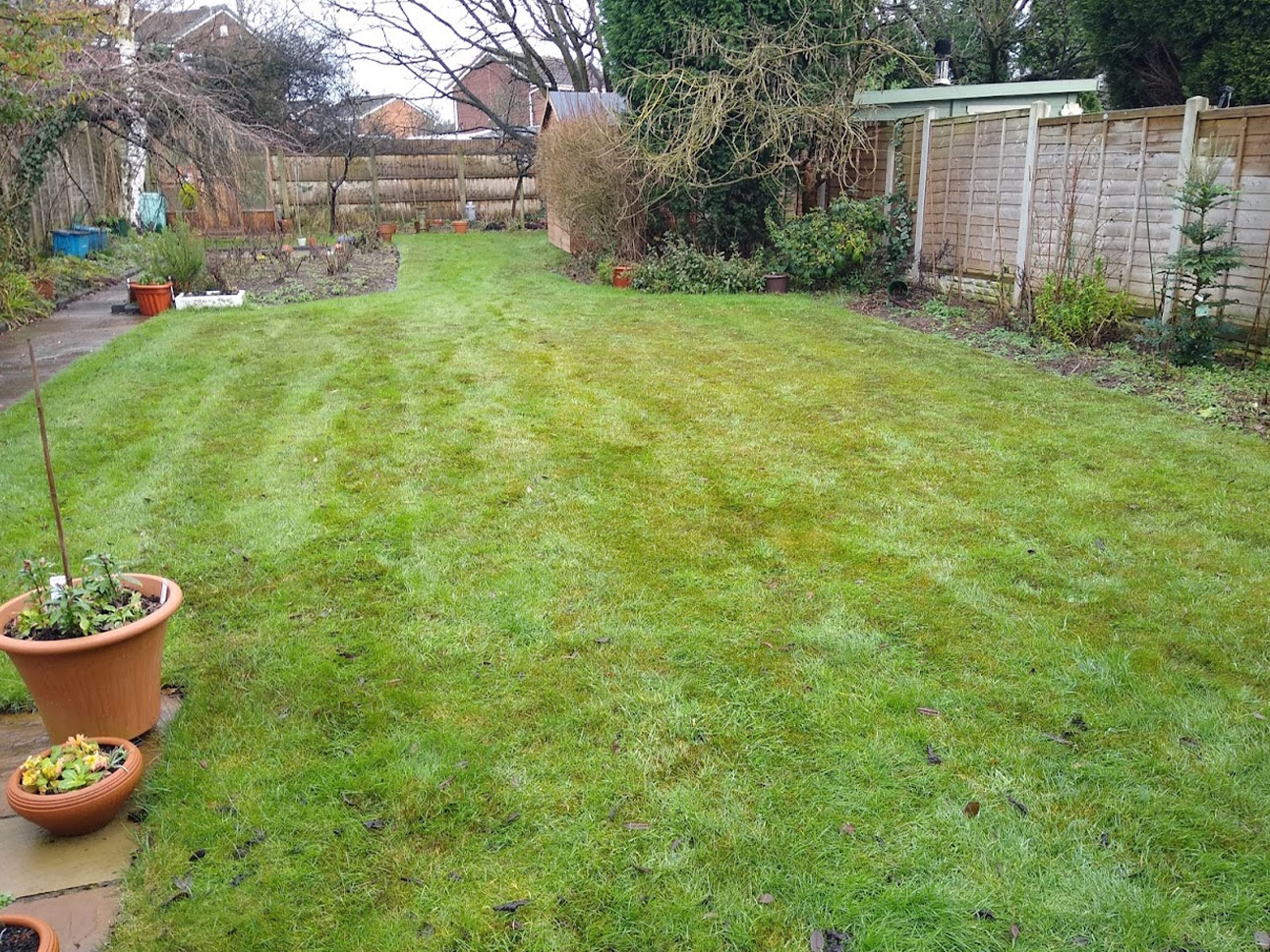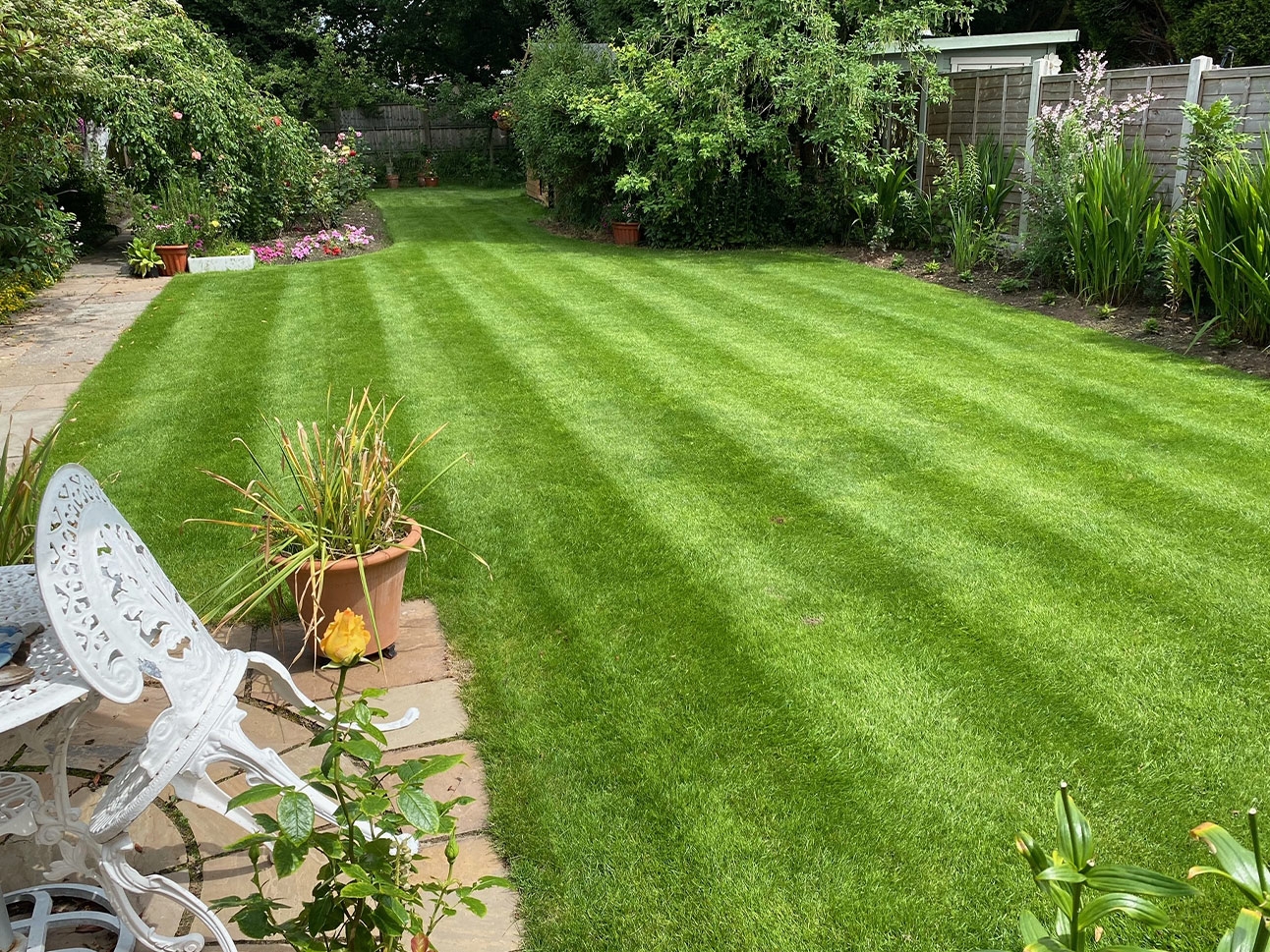What is Moss?
Moss is a spongey non-flowering plant which lacks a root system. There are many types of moss, but the majority of mosses require damp conditions in order to thrive. Mosses spread via their spores.
Moss is common in all turf settings and particularly in UK lawns. Lawns often possess more shade than sports turf settings, and the drainage of residential lawns can be poor, especially in clay soils. Good lawn care practices including regular moss treatments are key to maintaining a healthy grassed lawn through the cooler and often wetter months of October to April.
How do we treat Moss in Lawns?
Moss thrives off poor, weak grass cover. Regular Lawn Fertiliser applications strengthen the grass and make lawns more resilient to moss spread. It is vital that we treat the cause, not the symptom.
We treat for moss with our Autumn, Winter and Spring lawn treatments. Many make the mistake of ignoring the lawn until spring, allowing moss to thrive in damp conditions without action. Our treatment acts quickly to dehydrate moss, halting its development. This treatment also works in feeding the grass, enhancing grass colour, strength and disease resistance - such as Red Thread Disease.
There are a number of factors which can cause moss to favour a lawn. Along with our lawn treatments, we work with our clients to highlight these factors and provide ongoing recommendations. For example, Moss enjoys damp conditions, so we may recommend to allow more light to get into the garden, or to improve the drainage of the lawn.
Moss also enjoys a compacted, thatchy lawn surface. Where there is more moss than grass, we may recommend a Lawn Renovation so we can physically remove moss via scarification, followed by aeration and overseeding of the lawn. Where there is just an isolated area of moss following a wet winter, some of our clients will gently rake out areas of dehydrated, treated moss and seed those patches.
Why do you need to treat for moss?
Without taking adequate care of your lawn, moss can thrive and in time take over in certain conditions, with the moss outcompeting and outnumbering the grass.
While a moss-free lawn is often unachievable and undesirable, allowing moss to thrive does not make for an attractive lawn.
How Moss Can Damage A Lawn
Birds like to use moss during their nesting seasons. With its lack of a root system it is fairly easy to pick away at, thus allowing birds to make a mess of some lawns. Moss does not stripe like grass does and means that a consistent appearance to lawns can't be achieved.
Moss treatments not only work to dehydrate moss, but encourage additional colour and health for lawns.
As we apply a concentrated, highly effective liquid moss control, as professionals we are also able to tank mix other products with this, such as lawn feeds or selective herbicides (lawn weed killers) as required to gain the very best from your lawn across our five annual visits.


